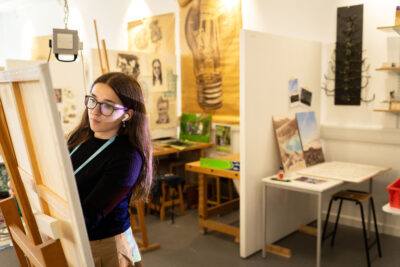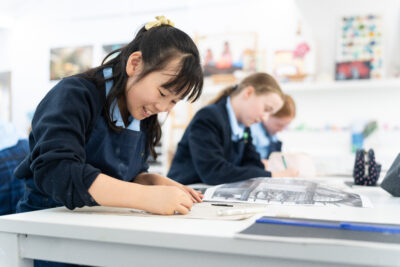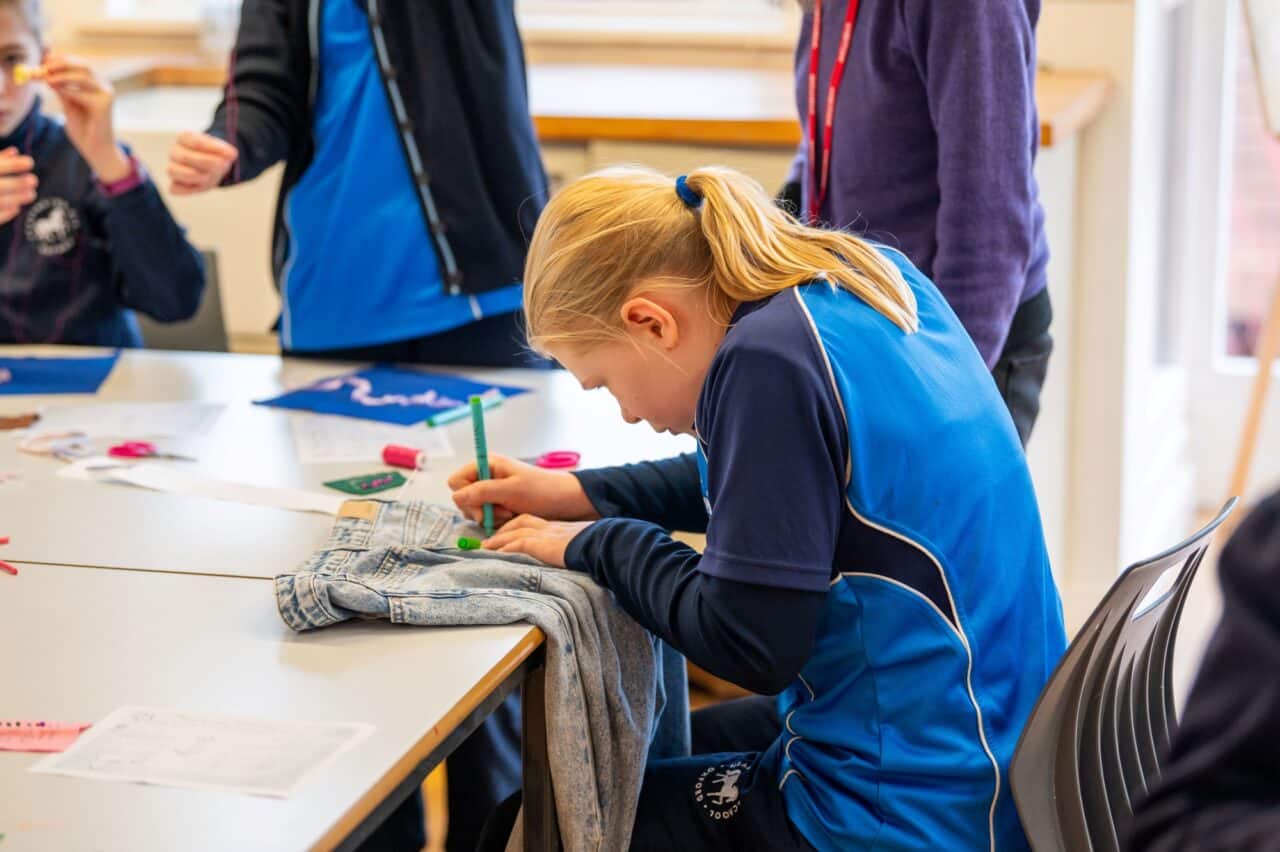The point of studying Art
“So what are you gonna do with Art then…except maybe teach or be an Artist and starve in a garret….??”
If I had a quid for every time I’d heard that refrain over the past 50 years, I’d be very wealthy…(well, okay, maybe five quid….!) But is it true? Was it ever true? And particularly with the ever-changing career market caused, most particularly, by huge technological advancements, will it be true in the future?
Maybe we need to look back at the teaching of Art over the past decades to analyse this further, and also perhaps look at how society and business has changed also in order to answer this question. So these are some of my anecdotal recollections.
As a schoolboy in 1974, our Art Department (one large room) was on the top floor of our 1960s designed, modernist inspired grammar school (within a year it would be merged with our local secondary school to become a comprehensive.) The school was perched on top of a hill and so the top floor had great views over the downs to inspire an inveterate daydreamer such as I was. We had to stand outside the classroom in an orderly line in silence (which NEVER happened) until the teacher came and let us in. The tables, seating 32 in total, were arranged around a large, square table in the centre.
“OK everyone,” our teacher said, “ Take a stool. There’s a still life arrangement in the middle of the room. Draw it.”
The arrangement was of pots and dried flowers. Boring. We would be drawing this for the next four weeks. The teacher was evidently bored also as he spent the lessons sat in his comfy chair with his feet up on his desk, reading his Daily Mirror with the smoke from his cigarette drifting lazily out of the open window.
(This may seem almost unbelievable now, but this was the 1970s – although I suspect he was breaking multiple school rules even of that era. However it would never have crossed our minds to complain!)
Apart from being bored stupid and daydreaming out of said window , there is one other moment from these lessons that I remember well.
On one of the few occasions that I was actually drawing I was having difficulty with the form of a particular object (a middle-eastern styled jug if I remember correctly). I just couldn’t get it right. So I grabbed my piece of paper and my pencil and wandered up to the teacher’s desk. He looked at me quizzically, as though he couldn’t understand what on earth I was doing.
“It’s the jug, Sir.” I explained. “I can’t get it right.”
I might as well have asked him what fuel mix was used to power the Apollo 13 spacecraft. His look of dull incomprehension would have been the same.
“Just draw it, James!” he said incredulously (boys were always addressed by their surnames, girls by their Christian names… .something else that has changed).
“But……but how Sir?” I asked innocently.
By this time most of the class was watching this altercation. He gave me a withering look and raised his voice a notch.
“Don’t be obtuse, boy! Just look at it and draw! Now go away!” and he dismissed me with a wave of his hand.
I remember feeling foolish. Stupid. Was I supposed to know how to draw a complex object? Maybe it was just the preserve of the artistically talented? If so, I was evidently not one of them.
A year later he left and an altogether different teacher arrived. He didn’t ‘dress down’ as had his predecessor who had always been in scruffy jeans and a T-shirt with an open, paint-splattered checked shirt. This chap ‘dressed up’! Velvet, purple bellbottom trousers and multi-coloured, vibrant shirts with three-inch Cuban heels and a big shock of permed hair a la ELO was his vibe. Looking back I’m sure he could have had a bit-part in Austin Powers.
When we walked into the Art Studio in September the following year, we were all a bit flummoxed. The tables were pushed back and everyone was given an A1 board, paper and a shared tray of powder paints. The new teacher stood theatrically in the middle of the room and with a wave of his arms invited us to paint.
We looked at each other in bemusement and shuffled around a little self consciously, before someone had the courage to say, “But paint what Sir?”, “There isn’t anything there…or anywhere?”
Another explained what we had been used to. “Shouldn’t there be something to draw before we paint it….er…something?”
Then, still taking centre stage and moving about like a ballerina on his Cuban heels he uttered words I have never forgotten….
“I don’t want you to draw! I don’t care if you can draw! I just want you to create! So come on darlings….create!!”
So we spent the next hour mixing up powder paints with no rhyme or reason and splattering them all over our paper… .and everyone else’s paper…
and over ourselves… (my mum was not happy!).
My point in mentioning these now historical anecdotes is several-fold.
Firstly, because of my first teacher, I thought Art was all about having a ‘natural skill’ which I believed I didn’t have. With the second teacher, I had fun, but learnt no skills. At the end of my time at that school, I had been thoroughly put off Art and never touched a drawing pencil or a paintbrush again until I was about 32 years old, some 16 years later. A few years after this I graduated from Art School with a 1st.
I’m not sure if my experiences at school in the 1970s were unusual, but even if so, I am certain that Art teaching has changed hugely since those times. Creativity is encouraged and is inspired by looking at the work of others. It doesn’t happen in a vacuum. The brain soaks up all the visual stimuli and experiences it can and then processes it in different ways. Each person’s brain is different. Each person’s set of experiences are unique and thus you can have two students both creating landscapes from their own photographs, both being inspired by, for example, Van Gogh, and both producing very different responses.
There are so many variables. A good skills base is encouraged, in drawing, painting, print-making and a range of other media. After all, there is nothing so frustrating as having a wonderful creative vision in one’s head, but not having the skills to manifest it. But when talking of drawing, for example, we also teach students how to draw. How to observe closely the nuances of proportion and the visual relationships of objects in a composition.
We also encourage them to see that a ‘good’ drawing is not necessarily about proportional accuracy, but about realising one’s intentions. The drawings of Maggi Hambling or Egon Schiele are often not proportionally sound, but they are wonderfully expressive.
Over a number of years, we will teach them the rudiments of painting in watercolour, acrylic and oils, but at the same time encourage exploration and experimentation with applying the paint, with the surface and texture and how that surface may be treated.
A good Art education is surely a marriage of learning the skills, whilst encouraging them to engage with their own experiences and express their own individual and unique creative take on life.
The marking criteria from the exam boards recognises this and assessment objectives include such criteria as exploration of media, quality of recording and the development, both thematically and through process of the student’s individual project, leading to coherent and resolved outcomes. If there is a criticism, it is that an ‘artist’ doesn’t really work in such a tick-box or rationally organised manner, so therefore the organisation of the GCSE or A level course cannot be ‘real’.
This is probably a reasonable criticism, although most artists will work to a theme of their choosing (indeed, some spend their whole working lives obsessed with just one theme!) and will be inspired by both their own experiences and by the work of other practitioners. Thus it could be argued that it is not that far removed from reality. We also have to recognise that this is a qualification and therefore it needs to be quantifiable and able to be marked objectively against a criteria.
Many, including some in academia and in independent schools, do not believe Art can be marked in anything other than a subjective manner. I would vehemently disagree. The marking criteria is such that when the whole department marks a project to the given criteria, we tend to be within three to four per cent of each other more than 90 per cent of the time. It is probably just as, if not more, objective as marking an essay.
We are very fortunate at Headington Rye to have the Hive, which is not just a great space, but houses some wonderful and often technically advanced equipment and facilities. The point of these is to enhance good practice, not to disguise or ‘prop up’ bad practice. A student interested in architecture may be trained to use the laser cutter, 3D printer or the vacuum former to enhance the possibilities of their model making and to bring their ambitious designs to a 3D reality. But they will still need to research, sketch, draw and come up with their original designs first. These machines just aid them in their rigorous, good practice. It will also help them when they go on into higher education and further into industry. We are also fortunate to have such a skilled body of teachers and hugely well-qualified technicians to assist in their use.
So Art education has changed out of all recognition over the past few decades, but coming back to the question in hand, does it make it any more relevant for the students going into the modern world?
Well, I would argue an emphatic yes. Art and Design is embedded more in our everyday lives than ever before. The old system, where within a company everything was organised along specialist departmental lines, seems to have gone. The modern workplace is more organic and has to react to fast-changing scenarios often outside of its control. People need to be creative in their problem-solving and in finding solutions to business issues. Perhaps more than anything else, a good Art education will help train individuals to develop their creative thinking capabilities, which will be a fundamental advantage in any industry.
However, even ignoring this, the creative industries are growing and thriving. Everything you use and most things that you see from the time you get up in the morning to the time you retire at night will have an artist or designer at their core. Fabric designers, fashion designers, product designers, automotive designers, architects, town planners, film producers, video games and website designers… the list is endless and they all require, or at least will benefit hugely from, personnel who have a good Arts education. Just take a look at the credits next time you watch a film. The directorial staff, editing, concept artists, CGI artists, stills photographers and so on ALL have arts training. In addition, the video games industry now dwarfs the film industry.
So, to answer the fundamental question: “what are you going to do with an Arts qualification?”
Whatever you want!





